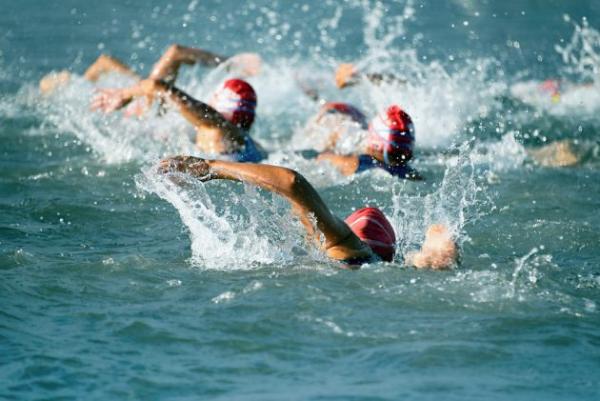While the number of triathlon-related deaths occurring each year in the United States is relatively low, the large majority of those who do die during these races fall into a few distinct categories.
So race enthusiasts take note: They are male; they are middle-aged or older; and these fatal heart attacks, or cardiac-arrest events, take place while swimming.
While you shouldn't be scared off from entering these physically-challenging races – if you're in the proper shape and that's your thing – those at higher risk should be particularly aware of the findings of a new study analyzing 30 years of data involving triathlon competitors.
In a follow-up to the study released last year, researchers at the Minneapolis Heart Institute Foundation now report that triathletes may be even more likely to die from the rigors of competition than previously thought.
Data on more than nine million competitors from 1985 to 2016 revealed that of 135 racers who either died suddenly (122), or went into cardiac arrest and were resuscitated (13), 85 percent were men.
And the average age of all victims was 47.
As for men, researchers wrote in their study, published Monday in the Annals of Internal Medicine, their fatality and heart attack "risk increased incrementally with each decade: 40 years and older to 50 years and older to 60 years and older (6.1 to 9.6 to 18.6 per 100,000)."
That's significantly higher than the overall risk of all participants: 1.74 victims out of every 100,000.
Moreover, of the 122 fatalities, 70 percent occurred during the swimming leg, the first portion of the competition, which also includes a bike race and long-distance run. The reasons for this occurrence both intrigued and bewildered researchers.
During the swim, "the athletes likely experience an adrenaline surge as they enter the water and are competing in close proximity to other athletes, and in some cases with environmental conditions that are difficult to prepare for,” said Dr. Kevin Harris, the study's lead author, as reported by Reuters. “We don’t understand the exact cause of death in each athlete, and some swim deaths may be related to drowning.”
Roughly 500,000 people participate annually in more than 3,200 triathlons in the U.S., researchers report.
Another explanation for swimmers' distress, Dr. Harris' team noted in its paper, could be due to "clinically silent cardiac abnormalities" that are present but surface when the body is subjected to "acute stress" during a triathlon. That finding suggests that even for racers who believe they are in good shape, a visit to the doctor before you compete – especially if you fall into these high-risk categories – would be exceedingly wise.




